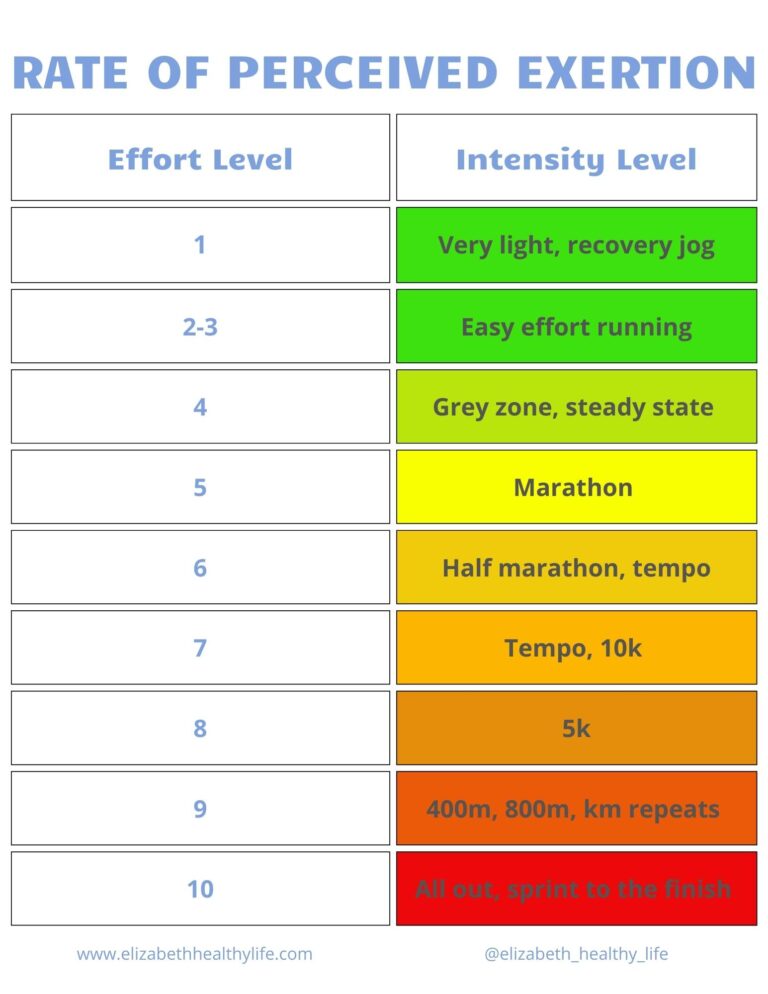13 Measurable Goals for Runners That Have Nothing To Do With Pace
If you like setting goals, it’s important to create measurable goals so you know the course of action to take and what success will look like. And if you’re a runner, keep in mind that not all goals need to be about time or speed. Here are 13 measurable running goals that have nothing to do with pace!
How Do You Write Measurable Goals?
Measurable goals are written so that you know what goes into achieving it, are able to track your progress along the way, and can identify success. One way to write a goal is to think about writing SMART goals, which are specific, measurable, achievable, relevant and time-bound.
For instance, instead of telling yourself, “I will run more”, think about how you can slowly and safely build your mileage to a distance that is attainable and reasonable for you. Decide what “more” is, what it means to you, and follow a customized plan to help safely get you there. A measurable goal for running more could be, “I will run 20 miles a week” or “I will run 4 days a week”.
Additionally, instead of saying, “I will become a stronger runner”, brainstorm what goes into becoming a stronger runner. For example, if you struggle with fueling, set a goal to eat before and after every run, as well as increase carbs before a long run. A measurable goal for becoming a stronger runner could be, “I will fuel before and after every run”.
If you’re looking for help creating measurable running goals and working towards them, email me at [email protected] or check out my Run Coaching Services page to learn more.
What are Measurable Goals Examples?
Remember, not all goals related to running need to be about speed or the time on the clock. Instead, push yourself to create goals that take the emphasis off how fast you are moving. Here are 13 measurable running goals that have nothing to do with pace.
1. Practice your fueling before, during, and after all training runs
Do you fuel well before training runs but need to focus on eating afterwards? If so, plan meals and snacks to have on hand for when you return from a run. Planning ahead will make this goal achievable and certainly relevant if you’re wanting to become a stronger runner.
Related: Fueling for Running: How to Fuel and Why It’s Important
2. Run for charity
Running for charity is a measurable goal because it is specific and you will know when it’s been achieved. If you are interested in running for charity, which charity are you going to run for and at which race? Additionally, this time-bound goal may require you to plan ahead so you can successfully raise enough money for the charity.
3. Train for a new distance
To make this goal measurable, decide which distance you are going to train for and when you will run it. Because every distance requires different training, planning ahead is key here. Working with a running coach is helpful if you’re looking for a safe and customized plan to follow.
4. Read a running book
Which book is it? When do you want to read this book by? There are so many running books to choose from! A few of my favorites include Let Your Mind Run by Deena Kastor, 26 Marathons by Meb Keflezighi, and Run to Overcome by Meb Keflezighi.
5. Strength train X times a week
Next, if you are looking to become a stronger, faster, and healthier runner, strength training is essential. Just like with running, start small with your strength training goals. At first, you might want to only use your body weight and then work up to using resistance bands and weights. Determine what days you are going to strength train and which plan to follow.
Related: Strength for Runners: Why Strength Matters and How to Get Started
6. Run strides twice a week
If you want to get stronger, adding strides into your weekly training is relevant. Running strides is also a perfect way to work on your form. Even if you consistently include speed in your training, strides should still be in your weekly routine.
Related: What are Strides? Benefits and How to Run Strides
Related: Introduction to Speed Work Guide
7. Build mileage safely to run X miles a week
Keep in mind, any mileage goal you set for yourself needs to be achievable and attainable. For instance, going from 10 to 25 miles weekly in less than a month is not achievable because it will likely lead to an injury. Because of this, make sure that any mileage plans you set for yourself are doable, align with your running goals, and allow you to build slowly and safely.
8. Join a local running group
This goal is specific and measurable because you can identify when and where this can be achieved and who it involves. Joining a local running group can help you become a stronger runner because it can motivate you to run when may normally not want to get outside.
9. Run outside even if it’s raining
Don’t let rain keep you inside! Running in the rain is great mental training and practice in case it’s raining on race day. In order for this goal to be realistic, make sure you have the proper gear to wear.
Related: Tips for Running in the Rain – 7 Ways to Crush a Rainy Run!
10. Run a race of a less common distance
Go beyond the typical 5k, 10k, half and full marathon and run a distance that’s different and outside your comfort zone. To make this measurable, figure out which distance and race to run. Furthermore, ask yourself if this is a time-bound goal. For example, if the race you choose is long distance, you may need to spend time training and building your mileage.
11. Volunteer at a race
Without a doubt, there are likely races in your area that are looking for volunteers. To make this goal specific and achievable, figure out which race you will volunteer for and what your duties entail.
12. Warmup before every run
Warming up before every run is relevant (and key to staying healthy) for all runners. Decide which warmup routine you are going to follow and keep an online journal or notebook detailing your progress.
Related: Glute Activation Warm Up – 5 Best Exercises and Benefits for Runners
13. Run on the trails
Whether you’re running with friends or are interested in a trail race, trail running offers a change of pace, scenery, and terrain. To make this goal achievable and realistic, make sure you know which trail (or trail race) you’re going to run and equip yourself with the proper gear.
Related: Trail Running for Beginners: What to Know Before You Get Started
Looking for Accountability with your Running Goals?
I would love to help you! Email me at [email protected] or check out my Run Coaching Services page to learn more.
Comment Below:
Is there a running goal from this list you’re going to pursue this year?
What’s one measurable goal you have set for yourself?















